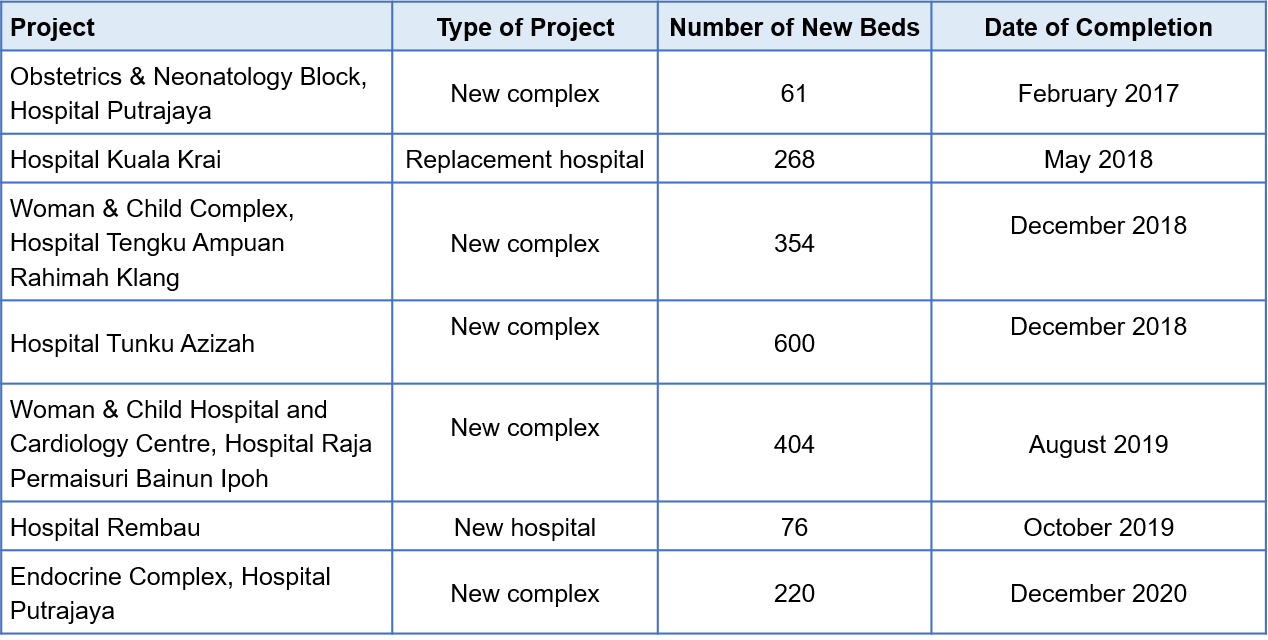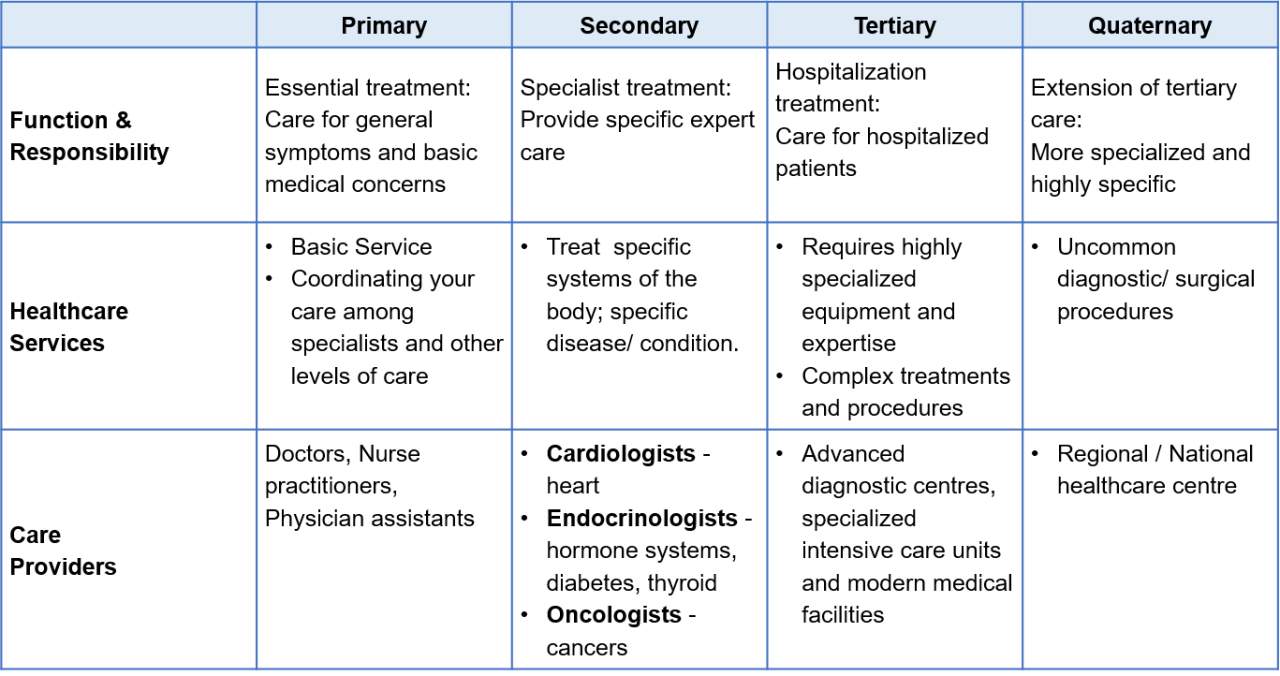Healthcare is essential in every country around the world. With the increasing complexity of the health care system, patients now have an incredible array of choices when it comes to receiving care. This often includes the option of selecting what type of health care facility they wish to utilise.
There are several types of healthcare being delivered as shown in the table below, mainly classified as the Primary, Secondary, Tertiary and Quaternary healthcare.
Table 1: Summary of Each Healthcare Services
Primary care can be broken down to Outpatient and Inpatient services.
Outpatient provides routine care as well as treatment for acute conditions that do not require immediate intervention. It can also perform procedures that are not too complex to be done safely in a doctor’s office but simple enough that patients generally do not require hospital care after undergoing them. It is different from the hospital’s emergency room, where it is only appropriate for a less severe medical issue like a stomach virus or a sprained ankle. Outpatient is commonly referred to as general practitioners.
Inpatient provides short-term care for people with severe health issues resulting from injury, disease or genetic anomaly. It offers a wide range of services, including emergency care, scheduled surgeries, labour and delivery services, diagnostic testing, lab work, and patient education.
Secondary care can be alternatively called Post-Acute Care. It is designed for patients who require constant attention but not required to stay in hospitals. An alternative option is that patients can remain in a Post-Acute Care centre until they have completed their secondary care.
It is often associated with seniors who require custodial care in a residential facility, and it can serve patients of all ages who require this level of care.
Tertiary care is provided for patients who are severely ill and require modern hospital medical facilities to promote recovery. The patients would need highly specialised equipment and expertise after complex treatment and procedures.
Quaternary care is an extension of tertiary care, but not every hospital offers quaternary care.
Secondary Healthcare in Malaysia
When people are referred to a specialist, can be either on a specific system of the body or disease, they generally need secondary care/ long-term care after carrying out the complicated procedures. In the context of Malaysia, secondary healthcare is mainly offered in public hospitals. This is primarily because none of the Post-Acute Centre is developed in Malaysia or the lack of skilled nursing centre, resulting in insufficient beds supply to the secondary care patients for long-term staying.
Meanwhile, it is found that the secondary and tertiary care services are expanding during the Eleventh Malaysia Plan (11MP) from 2016 – 2020. As a result, the number of MoH hospital beds have increased to 42,424 in 2028 from 41,089 in 2015, by 3.3%.
In Malaysia, the secondary hospitals have reached about 60% penetration of essential diagnostic imaging equipment such as Ultrasounds, Computed tomography (CT), Radiography (X-rays), etc. The result shows that secondary care patients are growing over the past years, which might be a challenge for the Ministry of Health to handle in the future.
As of 2019, there are about 376 operating hospitals in Malaysia, where 56 of them are furnished to provide tertiary care services. It was found that an increase in growth in Malaysia’s healthcare spending, with a 7.8% year-over-year increase in between 2018 and 2019. In addition, the growth of upgrading secondary to tertiary care services will be driven by the 320 secondary care hospitals that hold around 47% of overall ICU beds in Malaysia, which will then broaden the medical devices market in Malaysia.
Malaysia’s MOH planning to enhance the delivery of secondary care
The Strategic Framework of the Medical Programme, 2021 to 2025, was developed to further focus on the delivery of secondary and tertiary care.
Hence, seven strategies are being identified to enhance the healthcare services delivery, including to improve the surveillance and public health activities in secondary care and to establish a National communication and risk communication strategies for secondary care. In line with the Twelfth Malaysia Plan, the Ministry of Health has targeted to achieve the following outcomes:
- Sustainable, equitable and affordable healthcare
- Reduced preventable mortality and morbidity
- Person-centred integrated care
- Enhanced adoption of a healthy lifestyle

Table 2: Facilities Development under 11MP for the Secondary & Tertiary Care Services
A list of projects developed under the Eleventh Malaysia Plan (11MP) for the Secondary and Tertiary Care Services are illustrated in Table 2 with the date of completion. MOH in Malaysia aims to establish the hospital services further to serve the Rakyat better. In conclusion, the Ministry of Health will continue to stay active and dynamic to solve the upcoming challenges in the future to help the Rakyat in the country.
Having more than 27 years in business, 27 Group is able to provide you with access to investors for competitive funding needs while providing better ways to operate your business through financial and corporate advisory. We are the only 100% Malaysian owned local consulting firm that is fast, flexible and focused with unique expertise that blends of local socio-economic policy setting, engineering built assets globally and detailed in financial analysis.
By Yu Ting Tan, Consultant at 27 Projects.










